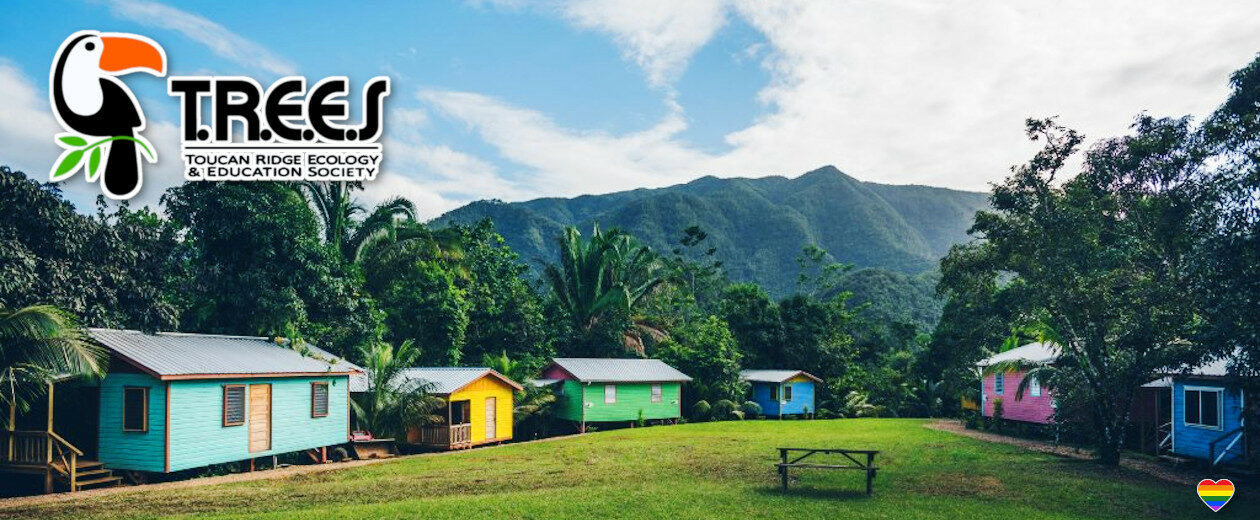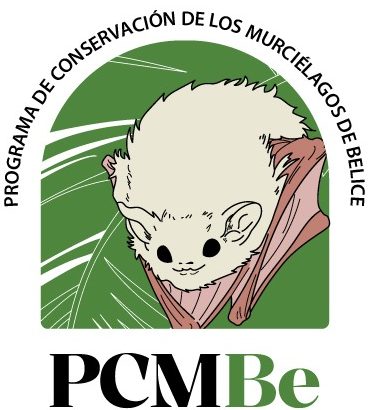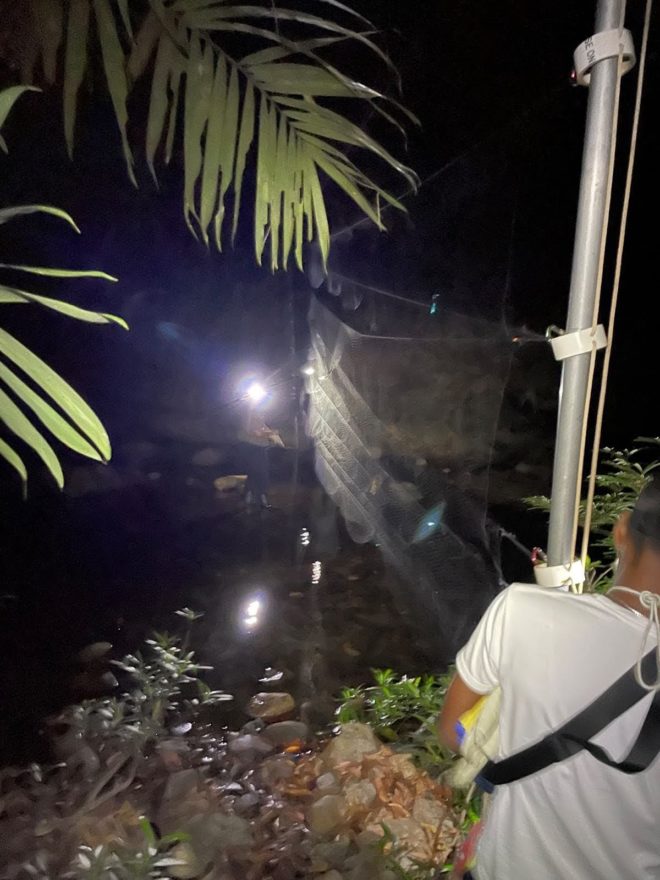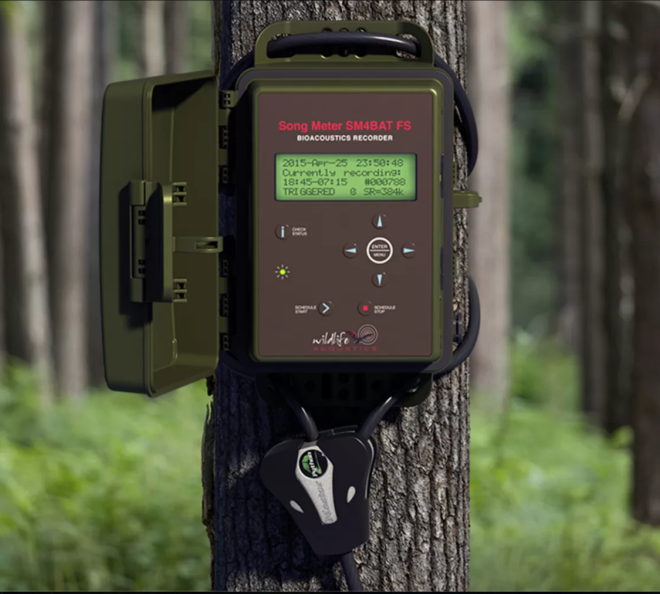PCMBe (Programa de Conservación de los Murciélagos de Belice) is a representative group of qualified professionals assisting in the RELCOM goal of conservation, monitoring, and protection of the bat species of Belize. PCMBe was formed in 2020 and its headquarters are located at the T.R.E.E.S Research Center at Mile 27.5 Hummingbird Highway in the Stann Creek District of Belize. We follow the three main objectives of the RELCOM program: Research, Education, and Conservation of Bats in Belize.
Research
PCMBe encourages the younger generation of scientists to conduct their research on bats in Belize. How do we do this? We have been collecting data on species diversity at The Toucan Ridge Ecology and Education Society (T.R.E.E.S) Research Center consistently since 2017, using two main methods of data collection:
Bat Capture Through Mist-Netting
This is the trapping technique of capturing bats with 2.6 to 12 m long mist nets made of fine nylon material. The mist nets have 4 to 5 trammel layers with pockets and are strung up using metal poles. Typically, we open them at emergence (sunset) when bats are most active, coming out from their daytime sleeping quarters. The bats don’t see the nets as they are made from very fine material and get caught in the pockets. We check the nets every 20 minutes as some bats have good teeth and can easily chew their way out! Once the bats have been extracted from the nets, data is recorded on their species, age, sex, and reproductive status, and any parasites they may carry on their fur. This type of data is tremendously important to collect and can only be done by capturing and measuring bats in-hand.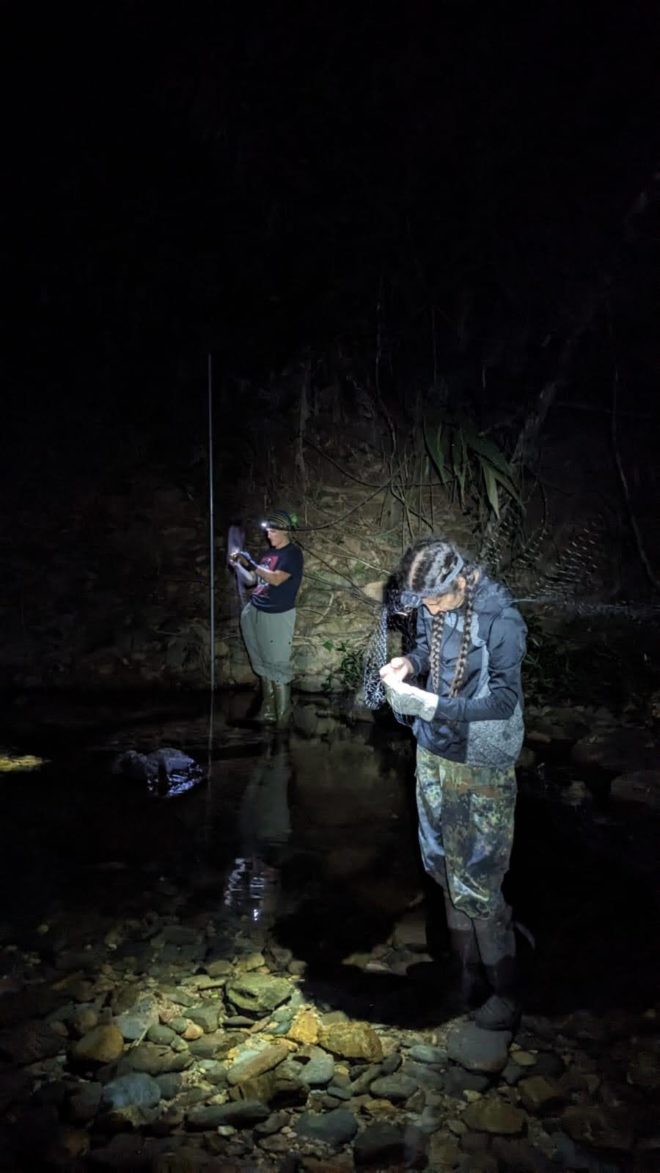
To apply this method, we have a team of experts that are vaccinated against Rabies and trained in safely handling bats without causing harm. We do not advise people to capture or handle bats without the guidance of experts as bats could transmit Rabies, and improper handling could injure either the bat or the handler or both.
If you are interested in seeing bats and learning more about them, come visit us at the T.R.E.E.S Research Center. We regularly offer internships to train budding bat biologists, with a particular focus on Belizean students and local young professionals interested in pursuing bat research in Belize.
Bat Acoustic Monitoring
A few times a year, we deploy our special acoustic recorders that are able to capture the ultrasonic sounds that bats produce. As you might already know, bats use echolocation to navigate and hunt. Echolocation is in the ultrasonic range, which means it is above the range of human hearing. Each bat species has its own frequency of call, so we can identify which species are flying above the canopy just by recording and analyzing their calls.
Why do this? Because not all bat species get caught in our nets! In fact, most of the species that we do capture are from just one family of bats called Phyllostomidae, or Leaf-nosed bats. Just like the species in this picture, all Leaf-nosed bats have a skin extension on their noses to help them emit echolocation calls and direct them accurately.
Each bat species is specialized in using a specific space in the forest and hunting for the food they eat. The species that we don’t capture often fly over the canopy and above our nets. They also usually have very good echolocation abilities that enable them to see our nets more easily and from further away. Using acoustic recorders allows us to have a complete view of all bat diversity at our site, even when we can’t capture all of them!
With the database we now have, we can study their ecology, seasonality, reproductive seasons, as well as activity in relation to the moon phases. If we continue collecting this data, we could potentially monitor the effects of climate change or habitat change on bats in the region.
Special Bat Projects
A few bat species have evolved to roost inside termite nests. Two of those species can be found in Belize, and one has been detected at T.R.E.E.S. Lophostoma nicaraguae is a species of bat that has only recently been separated from Lophostoma brasiliense, and little is known about its ecology. We have been collecting data on their behavior, roost size, and habitat preferences. We study termite nests with cavities and use remote camera traps to capture their movements in and out of the nests. To date, we have found seven nests with cavities made by bats, and bats were observed roosting in four of them. Check back in to learn more about these bats; we are working on publications about them!
Education
At the T.R.E.E.S Research Center we operate facilities that allow professionals and students to gather data and write scientific publications on their findings. We also host regular workshops and events to educate International and local students and young professionals on various ecological field techniques, helping them develop their skill-sets for future careers in biology and conservation.
Our community outreach programs invite local youth to participate in activities and learn about the flora and fauna of Belize. This includes a presentation on bats of Belize and a demonstrative mist-netting workshop to showcase the great diversity of bats we have and their importance for the ecosystem.
PCMBe has been working on outreach materials for the general public of Belize, aiming to educate them about the importance of bats. We have created educational pamphlets for both adults and youth, recognizing that youth are often more open-minded about bats and can help build a future with an educated mindset. Subsistence farmers in our area are our target adult audience since bats are incredibly important crop pollinators and sadly misunderstood and feared by many.
Bat Pamphlet
Kids Bat Pamphlet
We have also developed a guideline protocol with steps to follow when encountering bats in houses. If this happens to you or someone you know, please follow the steps found in this document or contact members of the PCMBe to assist you:
Conservation
AICOM at T.R.E.E.S
The T.R.E.E.S Research Center is proud to announce that our site is now the first Area of Importance for the Conservation of Bats (AICOM) in Belize. AICOMs and SICOMs are crucial tools for the protection of threatened bats, achieved through the designation of locally protected areas and sites. At a regional level, these areas integrate into a broader system of protected regions, known as AICOMs, which encompass sufficient space for bat populations to sustain their vital processes and ensure their long-term survival. In contrast, Sites of Importance for the Conservation of Bats (SICOMs) are smaller, specific locations, such as caves, water bodies, foraging sites, or anthropogenic structures like houses, bridges, tunnels, and abandoned mines. These sites harbor significant bat populations and require targeted protection, care, and management. Our 80 ha property’s new designation as an AICOM highlights our commitment to conserving these essential species and their habitats.
